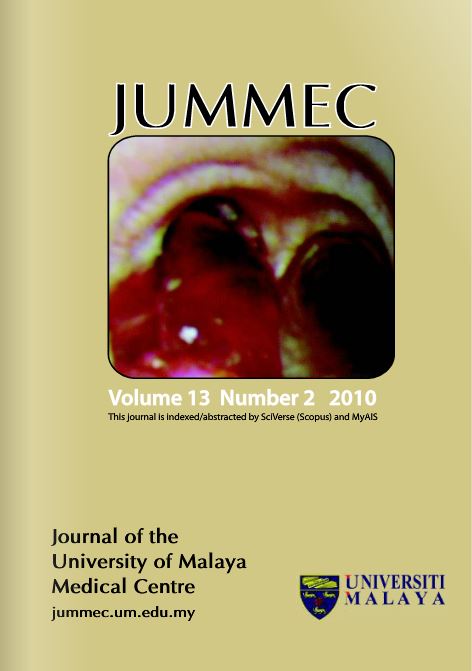NEONATAL CHOLESTASIS AND BILIARY ATRESIA: PERSPECTIVE FROM MALAYSIA
Abstract
The liver is an important organ of the human body, playing a major role in the metabolism and storage of nutrients, synthesis of protein and other nutrients, as well as detoxifying many metabolic by-products. The response of the foetal and newborn liver to external insult and injury
is limited. This is because the ability of the closely interdependent structures of a developing liver of expressing in the face of a variety of insults is limited as well. Thus most infants with insults to the liver present as cholestatic jaundice with variable degree of pale stools, enlarged liver and conjugated hyperbilirubinaemia. Biliary atresia, an idiopathic condition characterized by progressive fibrosing obliteration of both intra- and extrahepatic bile ducts, is the most important cause of neonatal cholestasis worldwide, including Malaysia. It is also the most important indication for childhood liver transplantation the world over. Challenges facing infants with biliary atresia include a delay in the diagnosis and late surgery, leading to a poor outcome. This often results from a failure to recognise the potential serious nature of an infant with prolonged cholestatic jaundice and pale stools among health care professionals.
Downloads
Downloads
Published
Issue
Section
License
All authors agree that the article, if editorially accepted for publication, shall be licensed under the Creative Commons Attribution License 4.0 to allow others to freely access, copy and use research provided the author is correctly attributed, unless otherwise stated. All articles are available online without charge or other barriers to access. However, anyone wishing to reproduce large quantities of an article (250+) should inform the publisher. Any opinion expressed in the articles are those of the authors and do not reflect that of the University of Malaya, 50603 Kuala Lumpur, Malaysia.


